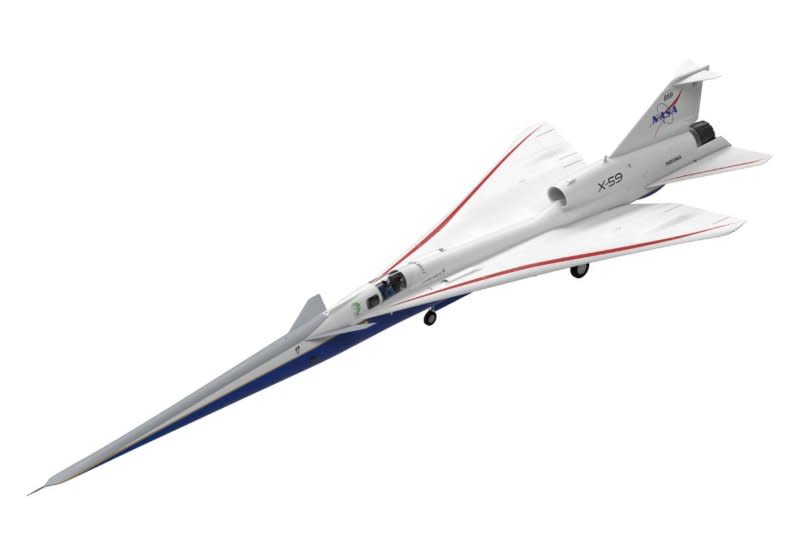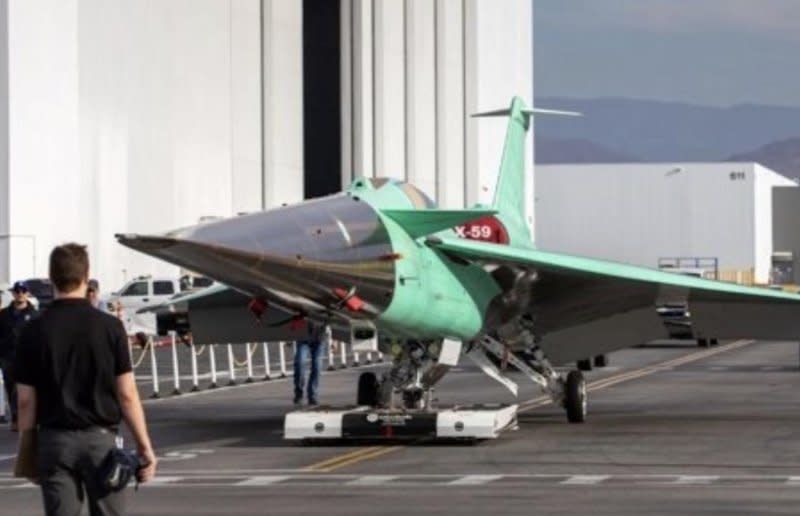NASA's experimental X-59 supersonic aircraft to be painted red, white and blue

Nov. 16 (UPI) -- NASA's X-59 supersonic aircraft, designed to fly faster than the speed of sound without the sonic boom, is getting a makeover.
The experimental aircraft taxied Tuesday to Lockheed Martin Skunk Works' paint barn in Palmdale, Calif., where it will be transformed from its current matte metal and green to red, white and blue.
The X-59's new paint scheme will include a mostly white body, a NASA "sonic blue" underside and red accents on the wings. The final paint job will protect the aircraft from moisture and corrosion, according to the space agency. Once finished, the plane will have final measurements taken, including weight and shape, to improve computer modeling.
The X-59 is part of NASA's Quesst mission, which has been pushed back to 2024. Next year, the space agency will fly the newly painted experimental plane over several U.S. communities to gauge people's perceptions about the sound it makes.
"We are incredibly excited to reach this step in the mission. When the X-59 emerges from the paint barn with fresh paint and livery, I expect the moment to take my breath away because I'll see our vision coming to life," said Cathy Bahm, the low boom flight demonstrator project manager.

Bahm said new data on what NASA refers to as a "sonic thump," which is quieter than the typical sonic boom that occurs when flying faster that the speed of sound, will be provided to regulators who could adjust current rules banning commercial supersonic flight over populated land.
"The year ahead will be a big one for the X-59," Bahm said, "and it will be thrilling for the outside of the aircraft to finally match the spectacular mission ahead."

